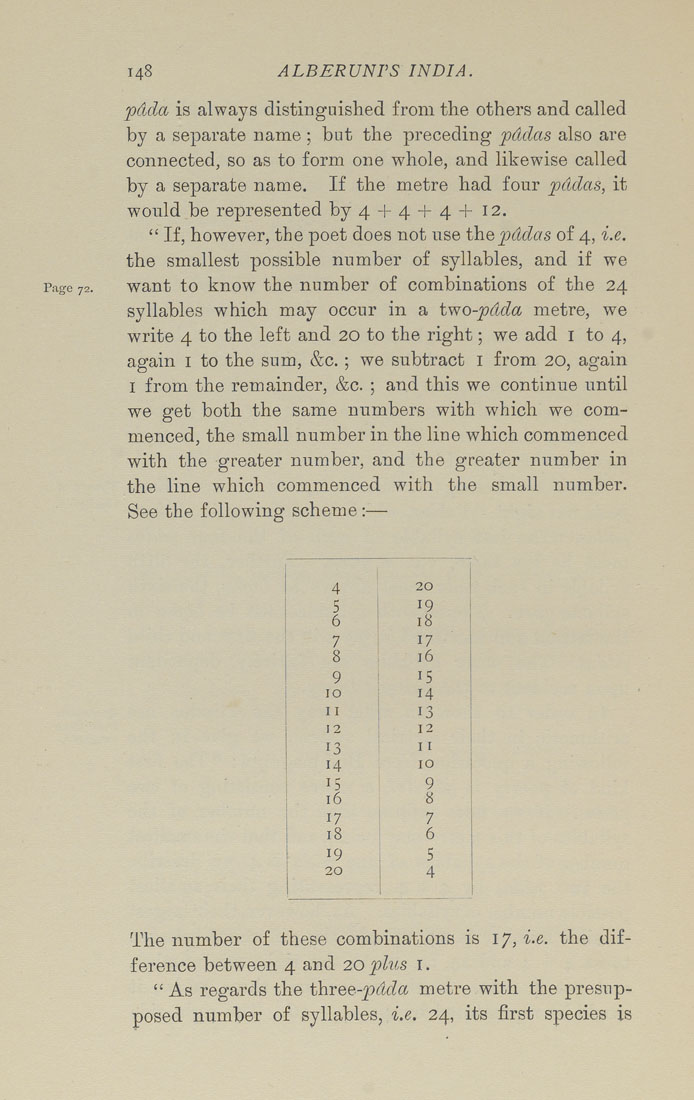Bīrūnī, Muḥammad ibn Aḥmad, Alberuni's India (v. 1)
(London : Kegan Paul, Trench, Trübner & Co., 1910.)
|
||
|
|
|
|
| Page 148 |

148 ALBERUNPS INDIA. pdda is always distinguished from the others and called by a separate name ; but the preceding pddas also are connected, so as to form one whole, and likewise called by a separate name. If the metre had four pddas, it would be represented by 4 + 4 + 4 + 12, " If, however, the poet does not use the pddas of 4, i.e. the smallest possible number of syllables, and if we Page 72. want to know the number of combinations of the 24 syllables which may occur in a two-pdda metre, we write 4 to the left and 20 to the right; we add i to 4, again i to the sum, &c. ; we subtract I from 20, again I from the remainder, &c. ; and this we continue until we get both the same numbers with which we com¬ menced, the small number in the line which commenced with the greater number, and the greater number in the line which commenced with the small number. See the following scheme:— 4 20 5 6 19 18 7 8 17 16 9 15 10 14 II 13 12 12 13 II 14 10 15 16 9 8 17 18 7 6 19 5 20 4 The number of these combinations is 17, i.e. the dif¬ ference between 4 and 20plus I, " As regards the three-^ac^a metre with the presup¬ posed number of syllables, i.e. 24, its first species is |
| Page 148 |







